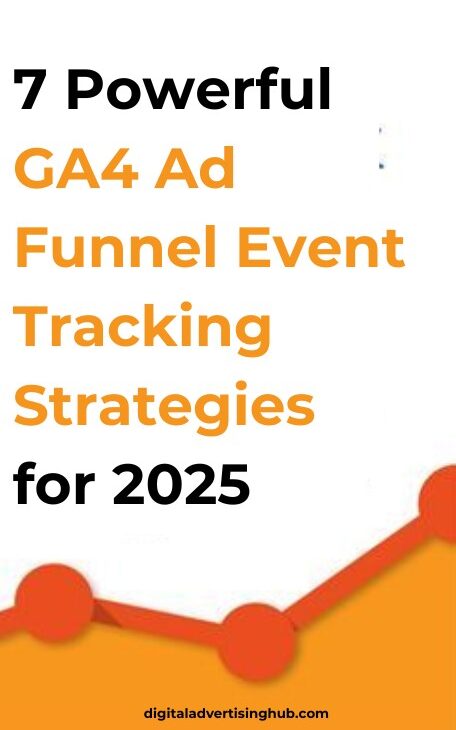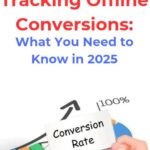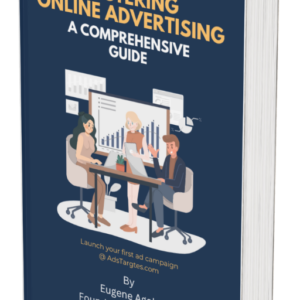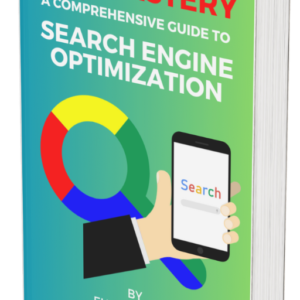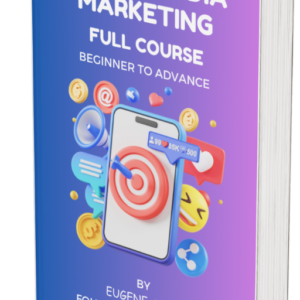In digital advertising, knowledge really is power. It’s no longer enough to just know how many clicks your ads generated or how many visitors came to your site.
Advertisers who win in today’s environment are the ones who can map out the entire customer journey, identify bottlenecks, and optimize ad spend based on solid insights.
This is exactly where GA4 ad funnel event tracking shines.
Google Analytics 4 isn’t just an upgrade from Universal Analytics—it’s a full transformation in how user interactions are measured.
Instead of being stuck with rigid session-based tracking, GA4 gives you the flexibility to define events at every step of the funnel.
Whether that’s a scroll depth, a form completion, or a purchase, you’re no longer tied to a one-size-fits-all model.
You build your own funnel insights tailored to your campaigns and goals.
But here’s the catch: many advertisers still underuse GA4.
They run campaigns, check top-level traffic reports, maybe even look at conversions, but they fail to take advantage of the event-driven model.
Without properly setting up events, your funnel is a mystery. You might know you got a sale, but not why. You might see drop-offs, but not where.
That lack of clarity bleeds ad spend and kills ROI.
#1. Map the Complete Funnel with Pageview + Scroll Events

The starting point of any ad funnel is simple: users arrive on your site after clicking your ad. But the real story begins after that first pageview.
Are they engaging with your landing page? Do they scroll down to see your offer? Do they stop after the hero section or dive deep into your content?
These are questions that can only be answered with GA4 ad funnel event tracking using pageview and scroll events.
GA4 automatically logs pageviews, but scroll tracking takes things further. By setting up events at milestones like 25%, 50%, 75%, and 100% scroll, you create a map of user attention.
For ad funnels, this is a game-changer. For instance, if most users bounce after only scrolling 25%, it means your headline may not align with your ad promise.
If they reach 75% and then leave, perhaps your call-to-action is positioned too late, or the offer lacks urgency.
This level of engagement data isn’t just about content performance—it’s about funnel diagnostics.
You’re building a data-driven way to see exactly how ad traffic interacts with your landing page. Instead of guessing, you know if attention is dropping off too early.
With GA4 ad funnel event tracking, these scroll and pageview events form your baseline. They show whether ad clicks are leading to meaningful engagement or shallow visits.
From here, every other funnel event builds on this foundation. And without it, you’re flying blind, wasting impressions and money on ads that don’t lead to true consideration.
#2. Track Micro-Conversions with Click Events
Not every meaningful action in a funnel is a purchase. In fact, for many campaigns, the micro-conversions along the way are just as important.
This is where click events in GA4 ad funnel event tracking give you a critical edge.
Micro-conversions include clicks on “Learn More,” “Download,” “See Pricing,” or even “Watch Video.”
These aren’t the final goal, but they signal intent. Tracking them allows you to separate casual visitors from serious prospects. For example:
#1. Clicking “Pricing” suggests buying intent.
#2. Clicking “Case Study” shows interest in proof of value.
#3. Clicking “Contact Us” signals readiness to engage.
By defining these actions as events, you can map the steps users take before a major conversion.
This information transforms campaign optimization.
Instead of treating all clicks equally, you can see which ads drive deeper engagement and which ones attract surface-level traffic.
Imagine two ad groups: one generates 1,000 clicks, the other only 600. At face value, the first one seems better.
But when you use GA4 ad funnel event tracking to measure click events, you see the second group drives three times as many pricing page clicks.
Suddenly, the “weaker” ad group becomes your top performer.
Tracking micro-conversions ensures you optimize not just for traffic but for meaningful funnel progression.
It gives you the ability to nurture prospects, refine targeting, and stop wasting money on campaigns that don’t lead to true intent signals.
#3. Use Form Submission Events to Capture Lead Quality
For many businesses, especially in B2B, lead generation is the ultimate goal of the ad funnel.
Whether it’s a free trial sign-up, a demo request, or a consultation form, this is where campaigns prove their value.
With GA4 ad funnel event tracking, you can log form submissions as conversion events—but the real power comes in going deeper.
GA4 allows you to capture not only that a form was submitted but how it was completed. Did users abandon midway?
Did they hesitate in certain fields? This data gives you insight into friction points that kill conversion rates.
If you consistently see drop-offs when people are asked for phone numbers, maybe that field should be optional. If they abandon after too many questions, shorten the form.
But form submission events also tell you about lead quality.
For example, you can track if leads who came through a certain ad campaign filled out more fields thoroughly compared to leads from another campaign.
That signals stronger intent.
By tying form submission events back to your ad UTM parameters, you can pinpoint which campaigns are generating quality leads instead of just volume.
One ad might deliver lots of sign-ups, but they’re shallow leads who never convert into customers. Another ad might produce fewer leads, but they’re high intent and higher value.
In short, GA4 ad funnel event tracking for forms gives you the precision to optimize for lead quality, not just quantity.
And in high-competition markets, that distinction is what separates profitable ad spend from wasted budget.
#4. Capture E-Commerce Actions with Add-to-Cart Events
In e-commerce funnels, the add-to-cart event is one of the most telling signals of success. It shows that an ad didn’t just capture attention but pushed a user toward buying behavior.
With GA4 ad funnel event tracking, you can log add-to-cart events and analyze them across products, campaigns, and devices.
The real win here is diagnostic clarity. Say your campaign drives 500 add-to-carts but only 50 purchases.

Without event tracking, you might assume the ads are failing. But with add-to-cart data, you see the ads are doing their job—it’s the checkout flow causing friction.
That’s a funnel leak, not an ad problem.
This insight protects campaigns from being killed prematurely. Many advertisers shut off strong ads because they only look at final purchases.
Add-to-cart events let you see the middle stage of the funnel clearly, so you can adjust strategy where it matters.
Additionally, tracking these events allows you to segment by behavior. You can retarget users who added items but didn’t purchase with urgency-driven ads or discounts.
You can also analyze which product categories get the most cart activity, helping you prioritize ad spend.
Ultimately, add-to-cart events ensure your ad analysis isn’t black and white.
With GA4 ad funnel event tracking, you know exactly where interest turns into intent, and whether the funnel breakdown is caused by ads, product fit, or checkout experience.
#5. Track Checkout Events to Identify Drop-Off Points
If add-to-cart is the heartbeat of e-commerce funnels, then checkout events are the arteries.
They carry buyers through the most delicate part of the funnel—the point where money changes hands.
With GA4 ad funnel event tracking, you can break down the checkout process step by step, shining a light on exactly where drop-offs occur.
Consider a checkout with four stages: shipping info, payment details, review order, and confirmation.
If 70% of users abandon at the shipping stage, it tells you something specific—maybe shipping costs are too high or unclear.
If they abandon after entering payment info, maybe your payment processor isn’t trusted or lacks common options.
By logging each of these stages as events, you no longer guess about checkout performance—you see it in data.
This has two massive benefits. First, you can fix funnel leaks with precision instead of guessing. Second, you can build remarketing audiences based on behavior.
Imagine targeting people who reached payment but didn’t confirm with a follow-up ad saying “Complete your order today and enjoy free shipping.”
Checkout events ensure you’re not wasting ad budget by over-investing in traffic when the real problem is conversion friction.
With GA4 ad funnel event tracking, you know whether to optimize creative, offers, or checkout UX. That clarity saves money and boosts ROI.
#6. Fire Purchase Events to Lock in True ROAS
At the end of the day, purchases are the metric that matters most for revenue-driven campaigns.
This is where GA4 ad funnel event tracking proves its ultimate value: tying ad spend directly to revenue.
GA4 lets you log purchase events with rich details like transaction ID, product category, revenue amount, and even applied coupons. This level of data unlocks powerful segmentation.
For instance, you might find Facebook ads drive more low-cost purchases, while Google Search drives higher-value transactions.
Or that discount-driven purchases from retargeting campaigns result in lower lifetime value compared to full-price buyers.
Armed with this insight, you can make smarter decisions about where to invest ad budget. It’s not just about which campaigns produce sales but which ones produce the right sales.
More importantly, purchase events allow you to calculate ROAS (return on ad spend) with precision.
Instead of assuming that clicks equal value, you know exactly how much revenue came from each campaign, each audience, and each creative variation.
Without purchase event tracking, you’re making educated guesses. With it, you’re building campaigns on hard financial data.
And that’s the difference between ad funnels that burn money and ad funnels that scale profitably.
#7. Build Custom Conversion Events to Align with Business Goals
Not all businesses live and die by purchases. For some, the most important funnel milestone might be a free trial activation, an app download, a webinar sign-up, or even newsletter engagement.
This is where GA4 ad funnel event tracking gives you unmatched flexibility through custom conversion events.
Instead of being locked into default goals, you can define success based on your model.
A SaaS brand might track trial sign-ups as conversions because that’s the first step toward recurring revenue.
A publisher might track newsletter subscriptions because that fuels long-term monetization. An app might prioritize installs and activations.
By building these custom events, you align your funnel analysis with actual business goals. This ensures you’re optimizing ad spend toward outcomes that matter, not generic actions.

Even better, GA4 allows you to import these conversions directly into Google Ads, so your campaigns optimize toward your custom KPIs.
That creates a feedback loop where the ads you run are informed by the funnel data you’ve chosen to track.
Custom events are the ultimate win because they make your funnel insights personal.
With GA4 ad funnel event tracking, you’re no longer chasing someone else’s idea of success—you’re building your own, optimized to the metrics that move your business forward.
Conclusion
Advertising funnels are complex. Users move from awareness to interest to action in ways that aren’t always linear, and without proper tracking, it’s impossible to know where your campaigns succeed or fail.
That’s why GA4 ad funnel event tracking is the secret weapon of modern advertisers.
By setting up the right events—pageview and scroll, click-based micro-conversions, form submissions, add-to-cart actions, checkout steps, purchases, and custom conversions—you create a complete, actionable picture of your funnel.
Each event tells part of the story, and together, they transform raw data into insights that drive smarter budget allocation, higher conversion rates, and stronger ROI.
The advertisers who win today aren’t the ones with the biggest budgets—they’re the ones with the clearest data.
And GA4, when properly set up, gives you that clarity. Implement these 7 event tracking wins, and you’ll stop guessing about your funnels.
Instead, you’ll know exactly where to optimize, exactly how to scale, and exactly how to turn ad spend into sustainable growth.

